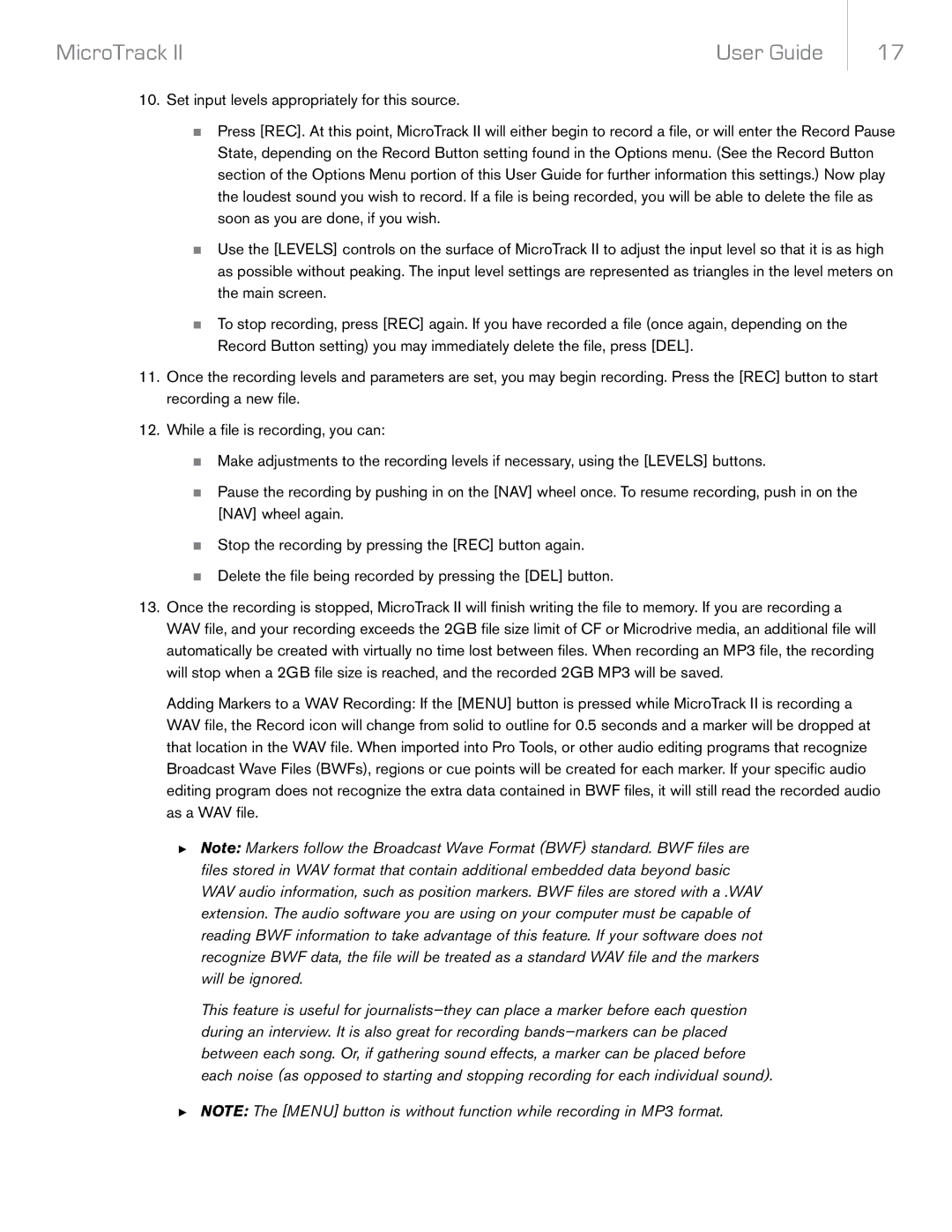MicroTrack II | User Guide |
17
10.Set input levels appropriately for this source.
<Press [REC]. At this point, MicroTrack II will either begin to record a file, or will enter the Record Pause State, depending on the Record Button setting found in the Options menu. (See the Record Button section of the Options Menu portion of this User Guide for further information this settings.) Now play the loudest sound you wish to record. If a file is being recorded, you will be able to delete the file as soon as you are done, if you wish.
<Use the [LEVELS] controls on the surface of MicroTrack II to adjust the input level so that it is as high as possible without peaking. The input level settings are represented as triangles in the level meters on the main screen.
<To stop recording, press [REC] again. If you have recorded a file (once again, depending on the Record Button setting) you may immediately delete the file, press [DEL].
11.Once the recording levels and parameters are set, you may begin recording. Press the [REC] button to start recording a new file.
12.While a file is recording, you can:
<Make adjustments to the recording levels if necessary, using the [LEVELS] buttons.
<Pause the recording by pushing in on the [NAV] wheel once. To resume recording, push in on the [NAV] wheel again.
<Stop the recording by pressing the [REC] button again.
<Delete the file being recorded by pressing the [DEL] button.
13.Once the recording is stopped, MicroTrack II will finish writing the file to memory. If you are recording a WAV file, and your recording exceeds the 2GB file size limit of CF or Microdrive media, an additional file will automatically be created with virtually no time lost between files. When recording an MP3 file, the recording will stop when a 2GB file size is reached, and the recorded 2GB MP3 will be saved.
Adding Markers to a WAV Recording: If the [MENU] button is pressed while MicroTrack II is recording a WAV file, the Record icon will change from solid to outline for 0.5 seconds and a marker will be dropped at that location in the WAV file. When imported into Pro Tools, or other audio editing programs that recognize Broadcast Wave Files (BWFs), regions or cue points will be created for each marker. If your specific audio editing program does not recognize the extra data contained in BWF files, it will still read the recorded audio as a WAV file.
►Note: Markers follow the Broadcast Wave Format (BWF) standard. BWF files are files stored in WAV format that contain additional embedded data beyond basic WAV audio information, such as position markers. BWF files are stored with a .WAV extension. The audio software you are using on your computer must be capable of reading BWF information to take advantage of this feature. If your software does not recognize BWF data, the file will be treated as a standard WAV file and the markers will be ignored.
This feature is useful for
►NOTE: The [MENU] button is without function while recording in MP3 format.
